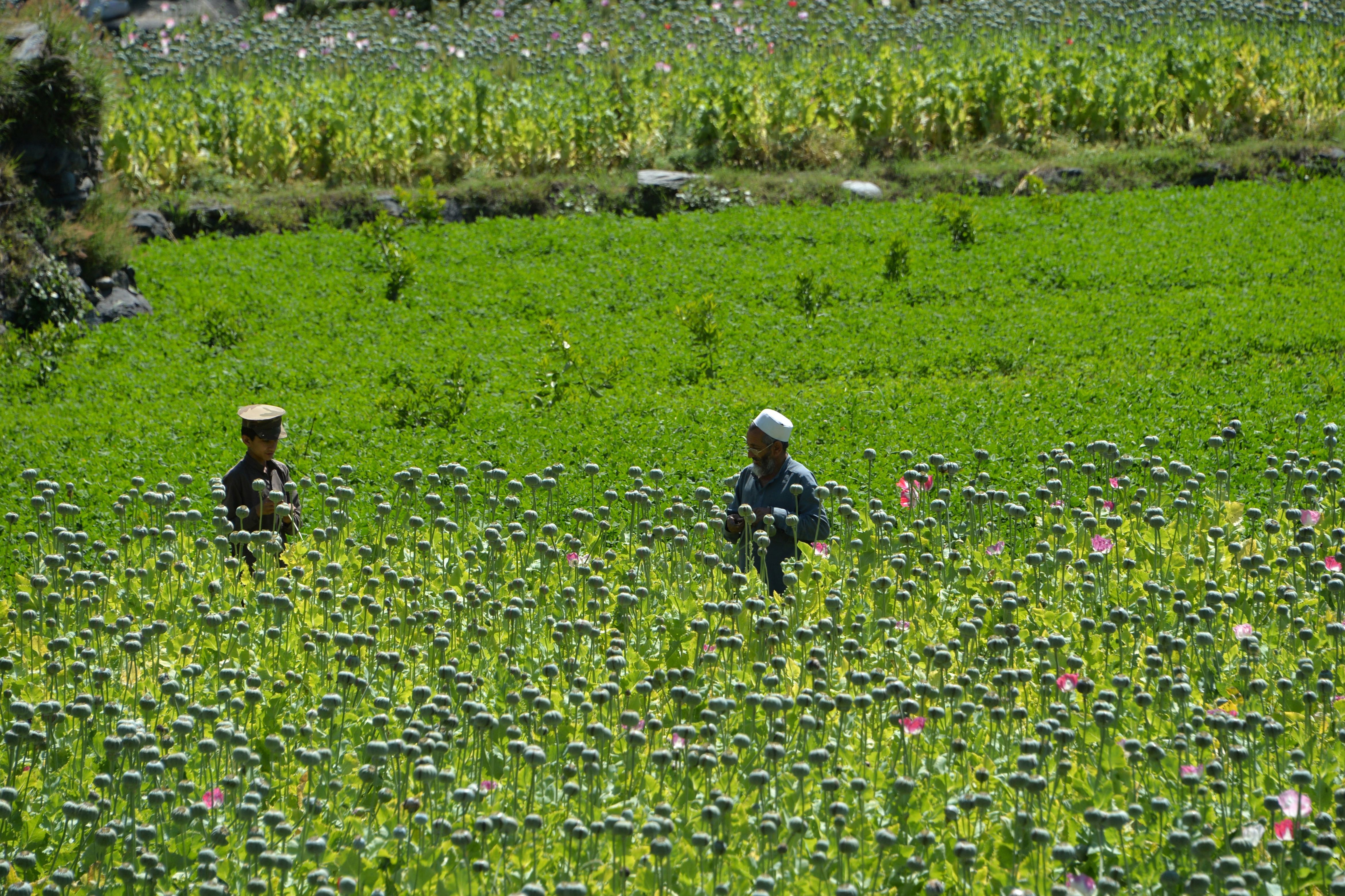Pandemic disrupts illegal drug trade, upending both product and profits

Tablets believed to be laced with fentanyl are displayed at the Drug Enforcement Administration Northeast Regional Laboratory on Oct. 8, 2019, in New York. According to the DEA, one drug that remains widely available in much of the U.S. is fentanyl, a synthetic opioid. (Don Emmert/AFP via Getty Images)
The coronavirus pandemic has disrupted the illegal drug trade in ways not seen since World War II, affecting nearly every country and many different kinds of drugs, according to a report compiled by the United Nations.
“It’s a completely different scale,” said lead researcher Angela Me, who works with the U.N. Office on Drugs and Crime, in Vienna. She said small-scale disruptions are common in the illegal drug trade but the chaos seen in recent months is nearly unprecedented. “Here everything has been disrupted,” she added.
In many ways, turmoil in the black market for narcotics and other drugs appears to mirror the pandemic’s impact on legal industries struggling with labor and transportation. It’s harvest season right now in the poppy fields of Afghanistan, the world’s biggest heroin supplier, but the U.N. report found a sudden shortage of field workers.
“The harvest involves more than a hundred thousand people,” Me said, noting Afghanistan sealed its border with Pakistan in March because of the virus. “Much of this labor force comes from other countries and it’s kind of a labor migration in a very short period of time.”
Border restrictions and stay-at-home orders around the world have also made it harder for producers to acquire the so-called “precursor chemicals” needed to manufacture drugs like heroin and methamphetamines.
“The drug we’re seeing the most disrupted is methamphetamine,” said Uttam Dhillon, acting administrator of the U.S. Drug Enforcement Administration. He DEA field offices across the country are seeing the supply shortages and rising prices.
Cartels in Mexico are also struggling with transportation of drug profits. “There’s a perceived increase in police presence associated with the stay-at-home orders,” Dhillon told NPR. “You couple that with the border shutdowns, it makes it more difficult to move drugs north and money south.”
According to the DEA, one drug that remains widely available in much of the U.S. is fentanyl, a synthetic opioid. That’s alarming because the U.N. report points out that during past disruptions of the drug trade, people shifted from heroin to fentanyl, resulting in more overdoses.

Indeed, this kind of upheaval in the illegal drug trade has happened before. David Courtwright, a historian who studies drug trafficking and substance abuse disorder, says many heroin users started taking riskier drugs during World War II.
“The government started buying up the opium supply even before the United States entered the war, in anticipation of military medical needs,” Courtwright said. “When the war broke out, of course smuggling routes were disrupted. It became really hard to get hold of drugs.”
Amid today’s pandemic, drug traffickers are already adapting. The U.N. found more local women working in Afghanistan’s poppy fields, for example, replacing workers who couldn’t travel. Cartels appear to be shifting from air and land transport to shipments by sea to bring product from Mexico into the U.S.
But in some parts of the world, U.N. researchers found drug markets are reeling as trafficking routes shut down. Coca leaf prices in Peru dropped by nearly half because of “decreasing demand by traffickers who have had difficulties in transporting the drug,” the report said. Italy and the United Kingdom also saw street-level drug markets dry up, meaning higher prices.
The DEA’s Dhillon said he hopes some of this disruption can be sustained after the threat of COVID-19 passes. “The challenge for DEA and all of law enforcement is to learn from what was in place at the time during the pandemic and see if we can enhance that so that in the future we can keep these drugs from coming in,” he said.
That might include continuing heightened restrictions at ports of entry, Dhillon added.
Meanwhile, experts say when drugs are harder to find and more expensive, more people do seek treatment. But finding help can be challenging right now, when quarantine rules have restricted access to many clinics and hospitals that are often the first point of contact for those struggling with addiction.
9(MDAzMzI1ODY3MDEyMzkzOTE3NjIxNDg3MQ001))


![CoronavirusPandemic_1024x512[1]](https://whyy.org/wp-content/uploads/2020/03/CoronavirusPandemic_1024x5121-300x150.jpg)


